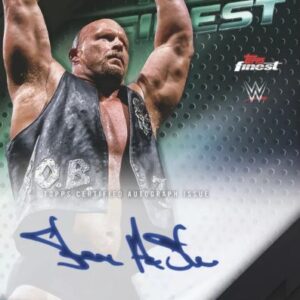February 20th became a date of unwanted significance for the San Antonio Spurs and their fanbase. Like a plot twist in a Greek tragedy, Victor Wembanyama, the towering prodigy heralded as the future of basketball, was diagnosed with deep vein thrombosis (DVT) in his right shoulder. The words “season-ending injury” fell like a pair of gold scissors at a grand opening that never happened, severing not only this year’s hopes but casting a shadow on expectations to follow.
The official statement from interim head coach Mitch Johnson was a bulletin of positivity wrapped in a prayer—a Houdini act trying to mask the genuine concern behind the headlines. According to Johnson, there lingers “no concern for Victor’s health personally (long-term)” or his career, but one can almost hear the collective breath-hold of San Antonio as he uttered those words. Fans keen on Wembanyama’s meteoric rise in the NBA universe will only exhale when he steps back on the court, vibrant and uncompromised by this rare ailment.
Before this unforeseen detour, Wembanyama’s name was being written into the stars with luminary ink. His stats read like a Shakespearean sonnet: 24.3 points, 11.0 rebounds, and an irreplaceable skill set that defied the traditional limits of a seven-footer. With a future brighter than the Texas sun, he was poised to redefine how we perceive talent atypical in build yet exceptional in execution. Plans were in motion, dreams robust, but suddenly the serpentine twist of fate showed it had other ideas.
The intermission in Wembanyama’s theatrical ascent brings to mind the specter of Chris Bosh’s career—a once-brighton, then tragically dimmed by recurring blood clots. Though the symphony of concern rises, the notes differ in their composition: Wembanyama’s clots are confined to his shoulder and not near the lungs, where pulsing matters darker still. But just as shadows lay on sunlit fields, doubt lurks under the optimism, sharpening eyes of scrutiny on his long-term viability.
Beyond the physical implications, the economic ripple effect this medical revelation unleashes makes headlines too. Victor’s rookie card market, teetering precariously on the edge, dances in the winds of uncertainty. The economic tapestry of collectors, investors, and magical thinking briefly unraveled by the fear of declining short-term value. High-end cards, once the golden ticket in Wonka’s chocolate factory, are poised for a soft landing as expert collectors reassess their bets. The once bullish market now seems only moderately optimistic, with savvy connoisseurs ready to gulp them at a discount, counting on the phoenix rise of Victor next season.
Sports journeymen know well that a pause in momentum sometimes leads to uneasy reflection on durability. The time away from hardwood battles can ebb confidence among managerial cohorts and enthusiasts alike. The concern for his durability verges on philosophical ponderings—can a player of his stature withstand the recurring windstorm of an 82-game season? The infinite loop of health and ability where career myths are built or broken ignites once again.
An intangible byproduct of this episode is its impact on San Antonio’s orchestrated dance toward glory. With Wembanyama as the new axis upon which their strategy spun, the acquisition of De’Aaron Fox touted a replotted course to relevance. Now, without their generational lynchpin, any such dreams are shelved, as team dynamics must now focus on a new rhythm: Development takes precedence over the pursuit of playoffs, turning the immediate focus from champagne celebrations to thoughtful chess moves on a futuristic timeline.
Comparisons flourish in the kindred sphere of Zion Williamson, whose early injuries created seismic shifts in perception—and card values. Should Wembanyama’s timeline for return face imprecision, a nostalgic déjà vu of dropping prices looms. Zion’s Prizm card was once a star-studded affair; now, it tells a cautionary tale of precocious talent diverted but, hopefully, not deterred.
For Wembanyama, the stakes are as ubiquitous as they are nuanced; the path ambivalent yet pregnant with possibility. The Spurs’ medical assurances provide groundwork for optimism, yet the clipboard of hope is tempered with evocations of fragility long associated with exemplary height and talent. How Victor maneuvers this crucible of challenge may define both his immediate career trajectory and legacy.
Amidst this gallery of concerns, whispers of grit and perseverance surface. Victor’s journey is thick with opportunity to conjure resilience of an almost poetic nature. Should he emerge healed and ready to script new chapters in the world of basketball, this moment will stand as a testament not just to a career tested by adversity, but to the universal narrative of human ambition and its refusal to yield prematurely to destiny’s specters. A defining moment, indeed, in the chapters to carve out his name—not just atop the Spurs’ lore, but in the annals of global basketball eminence.






